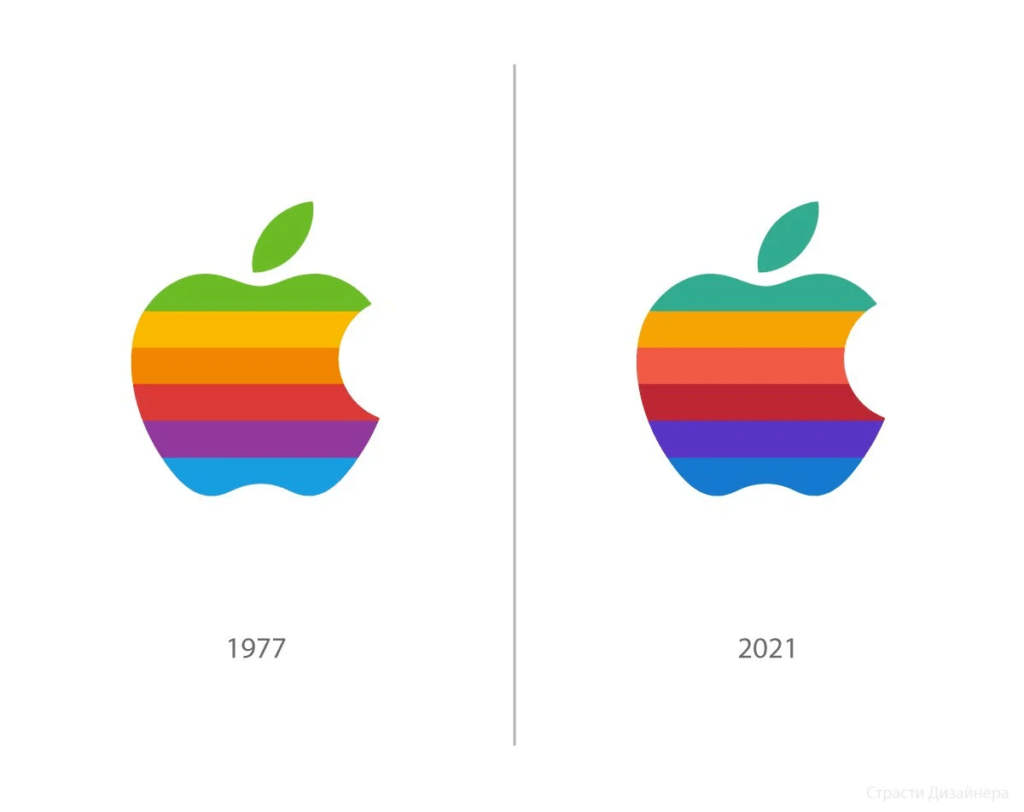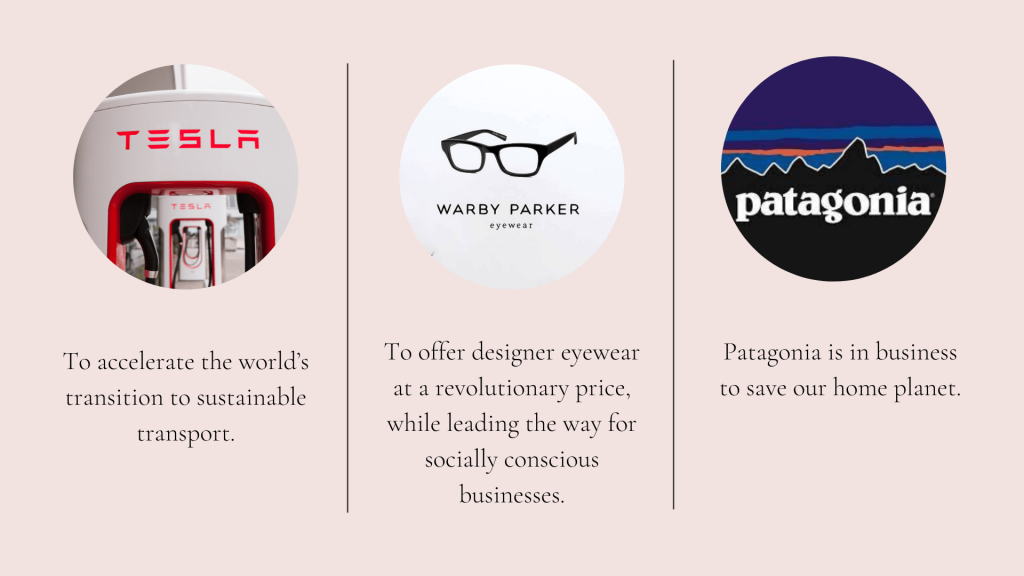Why Brand Design is More Important Than Ever
In today's economy, brands are more important than ever. Consumers need to know that the product they buy is genuine and from a quality manufacturer. They want to know that the product was made with care and attention. Brands also create a bond between a customer and a product. Customers trust a brand's quality because it's one they've bought from repeatedly.
Your brand is your business's identity—your brand says who you are, what you're about, and what you represent. It's also your company's best asset. Think of it like a fashion accessory. You wouldn't be caught dead without a necklace or bracelet. Yet your logo, company colours, and brand tone of voice are just as essential to your company's success. That's why a brand is more important than ever.
As a leader in the branding space, I've spent over 15 years helping companies craft brands that help them thrive—and when it comes to creating a great brand, I'm not just talking about logos and colour schemes. I'm talking about a business's attitude and culture, products and services, and how it treats its customers. Brands, in short, are the secret sauce of any business.
If you've got a decent brand, you're already ahead of 90% of businesses. But starting, you need to ensure that your brand works for you.
This article will give you an overview of the latest trends and changes in Brand Design. And I will tell you why getting your brand right is so important.
Table of Contents
Why Brands Are Important

Brand design is a powerful tool that helps companies connect emotionally with customers. The brand design includes the colour, fonts, logos, and taglines used to create a brand's identity. In contrast, brand architecture focuses on the brand's overall look across all touchpoints, including web, print, social media, and digital displays.
Brand design is vital for marketing because it helps customers understand the message being communicated by the company and allows them to connect emotionally with the brand. When customers see a brand they associate with trust and quality; they are more likely to purchase the product or service that the brand represents.
How Do Brands Make an Impression on Customers?
Brands make an impression on customers by creating an emotional connection with customers and communicating a clear and consistent message. Whether you're shopping online or in a brick-and-mortar store, how your brand looks communicates what kind of experience you're offering and what kind of brand you are.
There are two primary types of brand design: visual and textual. Visual branding incorporates colour, fonts, logos, images, and taglines into a brand's design. Visual branding is more common in traditional forms of advertising, such as TV, radio, and print.
Textual branding uses the words associated with the brand to communicate the brand's message. Textual branding is common in social media marketing and email marketing, where the customer sees the brand name or logo on the top of the email or social media message.
Visual branding is often more memorable than textual branding. As consumers, we associate colours and font styles with emotions, which leads to an association between the emotions felt when seeing a brand and the emotions we feel when purchasing that product or service. In addition, logos and images that incorporate words are more effective than simple words alone. In one study, people who saw an image of a green frog were more likely to buy products associated with that frog.
Brand Architecture
Branding is more than the logo and colours of the brand. It's the brand's overall look across all touchpoints, including the website, print, social media, and digital displays. This includes the brand's name, tagline, and colours.
Brands use the names, logos, and taglines that they create to represent themselves and their products or services. A brand's name communicates the identity of the company. For example, Coke is a familiar brand, “The Coca-Cola Company.” In the same way, your company's brand name is how you want people to remember it. Your brand name should be easy to pronounce, use the correct spelling, and be specific to your business.
A logo communicates a brand's personality and purpose. A logo should connect clearly to the business and its products or services. A logo is the most crucial element of a brand, and it should be recognisable by customers, even if it is simple and black and white.
Taglines are short, memorable slogans that describe the value proposition of a company's products or services. The tagline for the Nike brand is “Just do it.” If you run a business, taglines can also help you differentiate yourself from competitors by communicating your unique values.
Your brand colours are colours that represent your brand. When people think of a particular company, the colours that come to mind are your brand's colours. The brand colours you choose should reflect what makes your business or product unique and be consistent throughout your company.
In addition to the visual aspects of your brand, your tagline and brand colours are also crucial for textual branding.
Why People Care About Brands

Brands matter! When we buy something – whether it's clothing, electronics, cars, or even groceries – we do so with the expectation that we will experience something exceptional. If we don't, we're likely to leave the store unsatisfied, disappointed, and ready to look elsewhere.
In the same way, we buy a brand; we expect to receive superior customer service, quality products, and timely delivery. We even expect that the brand itself will become part of our identity. In other words, we buy a brand because we believe in it.
Why do brands matter so much? Because the expectations we hold for them have become embedded into our subconscious. We don't even know it, but when we choose a brand, we choose to align ourselves with its values, beliefs, and purpose.
Brands are so powerful because they've managed to become a central part of the world we live in. A lot of us have been influenced by them since the earliest days of childhood. We identify with them; they have a place in our hearts and minds.
So how do we create a brand identity that matters to us? It starts with knowing exactly what we want to be. What do we stand for, and what does our brand represent? How do we want people to feel when they think about us?
When it comes to developing a brand, there's no one-size-fits-all answer. Every business is unique, and so are the needs of its target market. However, there are some core values that almost every brand is expected to embody.
These include:
- Caring for people
- Being transparent
- Working with integrity
- Providing excellent service
- Taking pride in our work
- Empowering customers
- A sense of humour
- Staying true to our values
- Being authentic
As you can see, these are some of the things that you need to take into account when creating a brand. And this list isn't exhaustive.
It's essential to ensure that your brand truly represents who you are and why you're doing what you're doing. You want to build an emotional connection with your audience; to achieve that, you must be honest, genuine, and trustworthy. Your brand should also be able to communicate your product or service to the public in a way that speaks directly to their needs and interests.
How Do I Create a Brand Identity That Matters to Me?
1. Research and Define Your Brand
Before you develop your brand, you'll need to understand precisely who you are. This means understanding who you are, why you're doing what you're doing, and your values.
Think about your values, and ask yourself if you're living your values. How do you treat others? Are you kind? Honest? Transparent? Do you support a cause or a person? Do you have fun? Are you curious about life? Do you care about the environment? Do you value education?
It's also important to recognise the skills you've developed over your career. What strengths do you possess? How do you solve problems? What are your passions? What makes you happy? What makes you sad? Who inspires you?
You'll develop a clearer picture of who you are as a brand as you think through your answers to these questions.
2. Know Your Target Market
Once you know who you are, you can define whom you're serving. It's also essential to define the qualities you'd like your brand to stand for and the services or products you'll offer.
It's important to ask yourself whom you're trying to attract. If your goal is to sell more products, it's helpful to identify the demographics of your market. If your goal is to promote a healthy lifestyle, targeting specific populations, such as pregnant women or older adults, may be valuable.
You can also find out whom your customers are by surveying them. Ask your target market how they use your product or service. They may have preferences for how you should present it or even what you should emphasise when communicating with them.
3. Develop a Brand Vision
Your brand vision defines what you're all about and should answer the question, “What do you stand for?” What is the purpose of your brand? What does it stand for?
Take some time to think about your vision. What are you trying to accomplish with your brand? What values do you want your brand to embody? What are your goals?
4. Start Developing Your Brand
Once you've defined your vision, it's time to start creating your brand. Branding is all about the process of developing and maintaining a brand that represents who you are and what you stand for.
This includes a name, logo, colours, website, social media profile, and everything else that makes up your brand.
Begin by identifying the elements that make up your brand. What do you want people to remember about your company? How do you want them to feel about your company? What does your logo look like? What colours do you want to use? How do you want your customers to experience your brand?
The Importance Of A Great Brand Design

A great brand design can help you market and sell your product effectively and efficiently. A poorly designed logo can make it harder for customers to remember your name, even after years of advertising.
A lousy brand design can also be why your customers don't want to buy your products because the design doesn't match your message. Whether you're trying to communicate through marketing materials or online, a great brand design is vital to a business's success.
Why Is A Good Brand Design Important?
Brand identity is essential to every business. It sets the tone of your company's visual identity. It influences the products and services you offer and helps to develop your customer base and establish trust. In short, your brand design makes it easy for your customers to remember your name.
But a bad brand design can also cause your customers to forget your name. For example, if your company's logo is outdated, unattractive, or poorly implemented in other parts of your business, your customers might think you're cheap or unreliable. In addition, a poorly designed brand identity can limit your company's growth potential and hinder your company's ability to get your name out there.
What Are the Best Brands?
What makes a brand great? A well-designed logo is an influential and essential part of a brand. But other aspects are just as important. Your brand should include the following attributes:
- Solid and clear name recognition
- A unique identity, even if it's only used for branding
- A memorable tagline
- Attention-grabbing imagery that supports your brand
- Clear and consistent messaging throughout your marketing
- An overall appealing look
Your company's brand identity is the sum of all its elements, which means that your logo design is just one aspect of the package.
How to Find the Right Logo Design
In the digital world, where the competition is fierce, and the stakes are high, it's hard to stand out. But that doesn't mean your company can't have a well-designed brand. Many tools can help you create a unique brand identity, including:
- Your website, which is the most prominent place for your brand identity
- Your social media presence, such as Facebook, Twitter, and Instagram
- Other websites that use your company's name or brand
- Your company's mission statement
To create a unique brand identity for your company, you must consider your brand a living thing. That means that the design needs to evolve with your company's growth, but it also means that your logo will need to change with your brand's evolution.
Are there any Brands You Love?
How do you know if a brand is great or not? If your favourite brands are well-designed, they probably have some of the following characteristics:
- The brand has been around for a while
- A reputable company owns the brand
- The brand has a recognisable tagline
- The brand is simple
- The brand is consistent
- The brand is well-marketed
- The brand is successful
You don't have to be a marketing expert to know that some brands are better than others. Use these attributes to help identify the best brands in your industry.
Why Should You Care About Your Logo Design?

When developing a new brand, one of the first things you need to do is come up with a name for your business. Choosing a name is one of the most important decisions that you'll make as a business owner.
It's also one of the most confusing decisions, which is why many companies fail. Choosing the right name for your business is crucial, but it's also one of the most complex parts of starting a business. It's even harder when you're trying to create a new brand that stands out from the crowd.
Choosing a name that's too generic that doesn't convey the type of services, or products your company provides can limit your business's growth potential. Generic names are usually associated with low-quality service, so choosing a name that conveys the quality and professionalism you're offering is essential.
How It Fits Into Your Business Model
Every aspect of your brand must align with the goals and strategies that you have established for your business. The brand design needs to support your sales funnel and the overall direction you're taking your business. It's also a great way to distinguish yourself from your competition and give your business a more professional appearance.
Your brand is your business, so it's essential to have a strong, cohesive brand that reflects your business and conveys your message.
Are There Any Drawbacks to Brand Design?
Brand design is a potent tool for communicating your message, building your credibility, and establishing your business, but it can also be misunderstood, misused, and misapplied. If you haven't done it before, you need to take the time to do it right.
A poorly designed brand can cost your business money and time; even worse, it may damage your reputation and hinder your ability to connect with your customers.
It's also common to assume that everything is included in your brand design, from your logo and business cards to your website and social media profiles. However, many things fall outside of the realm of your brand. This includes:
- Social media profiles
- Business cards
- Product labels
Incorporating all these things into your brand design is a good idea, but exceptions exist. Your logo, for example, should reflect your brand. It should represent who you are and what your business stands for.
Your logo is your business's first impression, so it should be carefully crafted to represent your business, brand, and overall message.
How Can You Make Sure Your Brand Is Developed Right?
Many aspects of your brand are essential to a successful and influential design. The following are some basic steps that can help you make sure that you're on the right path.
First, identify your brand's message. You may have a message or a vision that you want to convey, or you may simply have a feeling for what your business is about.
Next, determine your audience. Who are your customers? What is the purpose of your business? Who are your competitors, and what do they say about your business?
Finally, create a mission statement. A mission statement is a concise summary of your brand's values, vision, and core message.
The right brand design is key to the success of your business, so it's crucial to invest the time to ensure that you're on the right path.
How Brand Design Helps You Build A Strong Business
A robust brand design is an integral part of the foundation of your business. Brand design communicates your message, establishes credibility, and gives your business a distinct, memorable appearance.
A robust and well-designed brand is the best way to set yourself apart from your competition and make it easy for your customers to find you.
A strong brand is also essential to attracting new customers, ensuring repeat customers, and gaining recognition as a leader in your industry.
The Power Of your Brand Voice

The first thing to know is that brand voice is not a “one size fits all” solution. It's an important tool to understand your business and how your brand is positioned, but it's also a complex topic. Here are some general guidelines to help you decide which brand voice is most relevant to you and your brand.
Who's the Audience?
Let's start with the audience. Are they very young consumers or older ones? What do they want and need? What are their expectations and experiences? These questions can help you to decide if your brand needs to be approachable or authoritative.
The more approachable and relatable your brand is, the less formal your brand voice should be. You may even want to create an “unbranded” voice, casual or lighthearted, for younger audiences.
However, your brand voice must reflect a more professional tone for older consumers. If your audience is older and you feel comfortable speaking more formally, you may want to stick with a more traditional, “formal” voice.
What Does It Mean to Be Authentic?
Another thing to consider is authenticity. What does it mean to be authentic in your brand? Is it meant to be an extension of the person behind it, or are you representing the brand more impersonally? How will the brand's voice play out?
Three different approaches to developing a brand voice are typically used to describe what a company says to its consumers.
- Brand personality – this is the most common type of brand voice. Here, the brand identifies itself by reflecting who the company is. The brand's personality is created through the personality of the company's owners or founders, the way the company is run, and the values it represents.
- Brand essence – this is similar to a brand personality, but it focuses on the core values that define the company and how they manifest in the products, services, and culture.
- Brand purpose – this is the most abstract and complex approach to a brand voice. Here, the brand is described as the purpose that it exists to serve its audience. This is the most difficult of the three to develop. To build a brand purpose, you must identify the company's role in the world, its purpose, and why consumers need to know about it.
What Is the Purpose of Your Brand?

Once you understand what the brand is and what it stands for, it's time to ask yourself some critical questions. Why is it important to your audience? Why does your brand exist in the first place? What is your brand purpose?
You must think deeply about your audience and their goals, desires, and motivations to answer these questions.
What Is Your Audience Like?
Understanding the audience is the first step in creating a brand purpose. Start by identifying your target audience. What are their ages, genders, education levels, income levels, and interests? Once you know your audience, you can begin to understand their goals and motivations.
How Do They Want to Feel?
Next, you'll want to know what your audience is looking for. Knowing their needs and wants will help you craft your brand voice in a way that will resonate with them.
Do They Want to Feel Safe?
You may find that you can use your brand to reassure them. If they're looking for a sense of security, you may need to address this. A brand that communicates safety can be reassuring and empowering. On the other hand, if your audience is looking for excitement or adventure, you may want to communicate that by using a more fun brand voice.
What Are Their Motivations?
Finally, it's time to explore the motivations of your audience. What drives them? What's important to them? Why are they in your industry? Why are they shopping in your stores? You can use this information to craft a brand purpose that serves their needs.
These answers will help you determine which of these approaches is most suitable.
Brand voice is a powerful tool that helps brands to express who they are and what they stand for. But it's a complicated topic. To make the best decisions for your brand, you'll want to start by defining your brand's purpose and audience. Only then can you start thinking about your brand's voice.
Conclusion
We're in the midst of a brand renaissance. Brands are increasingly becoming more important to us than ever before. We spend an increasing amount of time and energy thinking about brands, branding, and their impact on our lives.
Today, much of the marketing landscape is dedicated to brand building. There are brand agencies that specialise in this area. Some companies offer services that help people build brands. Even websites have been built just to help you build a brand.
Subscribe below to learn more about brand design!
